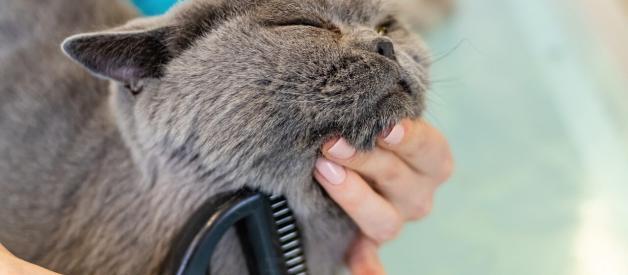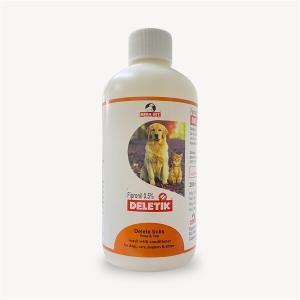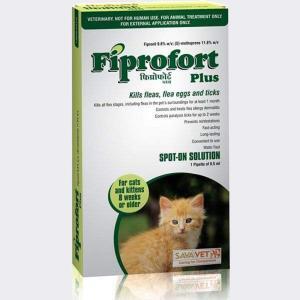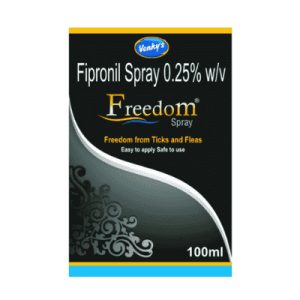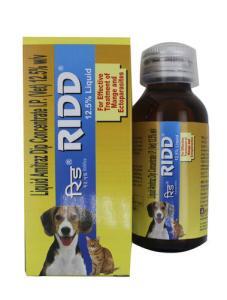Table of Contents
Cat fleas and ticks can pose health risks to humans. Cat fleas can transmit diseases such as cat scratch disease and tapeworm infections, while ticks can transmit Lyme disease and other tick-borne illnesses. Getting rid of cat fleas in the house is important to protect the health and well-being of humans and pets, as infestations can lead to discomfort, itching, and the potential spread of diseases.

How to Get Rid of Ticks and Fleas in Cats
You can follow these steps to get rid of ticks and fleas in cats.
Seek professional advice from a veterinarian to determine the most suitable treatment options for your cat. They can recommend safe and effective flea and tick control products. Administer veterinary-approved flea and tick control products specifically designed for cats. These can include topical treatments, oral medications, or flea collars. Follow the instructions provided by the veterinarian and the product manufacturer.
Regularly groom your cat using a flea comb or a fine-toothed comb to remove fleas and ticks on their fur. Focus on areas like the neck, head, and tail, where these parasites often hide.
Wash your cat’s bedding in hot water to kill fleas or eggs. Vacuum your home regularly, paying attention to carpets, furniture, and other areas where fleas and ticks may be present. Empty the vacuum bag or canister to dispose of the captured parasites.
Use a veterinary-approved insecticide or flea spray to treat your home, especially in areas where your cat spends most of their time. Follow the instructions carefully to ensure the safety of your pets and family members. Implement preventive measures to avoid future infestations. This can include continued use of flea and tick control products, regular grooming, and maintaining a clean living environment for your cat. Ask your vet whether cat fleas die in cold weather.
How to Tell If Your Cat Has Fleas?
How to check a cat for fleas?
Several signs can indicate if your cat has fleas. Here are some common signs that a cat has fleas:
- Frequent scratching and grooming: If your cat is excessively scratching, licking, or biting their fur, it may be a sign of fleas. Fleas cause itchiness and discomfort, leading to increased grooming behavior.
- Visible fleas or flea dirt: Check your cat’s fur, particularly around the neck, back, and tail regions. Fleas are small, fast-moving insects that can sometimes be seen crawling through the fur. Additionally, you may notice tiny black or reddish-brown specks on your cat’s skin or in their bedding. These specks, known as flea dirt, are flea feces, a common indicator of flea infestation.
- Hair loss or skin irritation: Flea bites can cause allergic reactions in cats, resulting in hair loss, redness, inflammation, or small bumps on the skin. If you notice any of these symptoms, fleas could be the culprit.
- Restlessness or unusual behavior: Can fleas make a cat sick? Cats with fleas may exhibit restlessness, irritability, or display unusual behavior. They may be constantly moving or trying to groom themselves excessively to alleviate the itching caused by fleas.
- Pale gums: In severe cases of flea infestation, cats may develop anemia, which can be detected by pale gums. If your cat’s gums appear pale or white, it is important to seek veterinary attention immediately.
If you suspect your cat has fleas, you should consult a veterinarian for proper consultation on what flea allergy dermatitis looks like in cats. They can guide how to eliminate fleas and ensure the well-being of your cat effectively. Also, if you have a cat and a dog, ask your veterinarian: Are dog and cat fleas the same or not? And can a dog get cat fleas?

What Illnesses Can Fleas Cause in Cats
Fleas can cause several illnesses and health issues in cats. Here are some common illnesses associated with what problems can fleas cause in cats:
- Flea Allergy Dermatitis (FAD) is an allergic reaction to flea saliva. Even a single flea bite can trigger intense itching, leading to excessive scratching, hair loss, skin infections, and inflammation. FAD is a common condition among cats with flea infestations. Address your veterinarian according to what to do about cats’ flea allergies, how to cure flea allergy dermatitis in cats, and how long does flea allergy dermatitis last in cats.
- Anemia: In severe cases of flea infestation, particularly in newborn kittens or cats with a high number of fleas, blood loss from repeated flea feeding can result in anemia. Anemic cats may exhibit symptoms such as pale gums, weakness, lethargy, and reduced appetite. Ask your veterinarian: can fleas kill a kitten?
- Tapeworm Infection: Do fleas cause worms in cats? Fleas serve as intermediate hosts for tapeworms. When cats groom and ingest fleas, they can also consume tapeworm larvae. This can lead to tapeworm infestations characterized by symptoms such as weight loss, diarrhea, and small white segments in the cat’s feces or around the anus.
- Bacterial Infections: Fleas can introduce bacteria into a cat’s bloodstream through their bites, leading to secondary bacterial infections. These infections can cause skin abscesses, cellulitis, or other localized infections.
- Bartonella Infection (Cat Scratch Disease): Fleas can carry the bacteria Bartonella henselae, which can be transmitted to cats through flea bites. This can result in cat scratch disease, causing fever, swollen lymph nodes, and general malaise. While rare, humans can also contract cat scratch disease from infected cats. You may ask your veterinarian: do cat fleas get in human hair?
It is important to prevent and treat flea infestations promptly to minimize the risk of these illnesses and their associated complications. Regular flea control measures and prompt veterinary care can help protect your cat’s health and well-being.
What Can I Put in My Cat’s Bath to Remove Fleas?
How to treat flea infestation in cats?
It is important to use special bath products to get rid of cat fleas and ticks because these products are specifically formulated to effectively eliminate these parasites while being safe for cats, as regular shampoos or soaps may not be as effective or harmful. We recommend Deletik (Fipronil) Shampoo 0.5% 200ml.
Deletik (Fipronil) Shampoo 0.5% 200ml
Deletik (Fipronil) Shampoo 0.5% 200ml is a specialized shampoo used to treat and control cat fleas and ticks. It contains the active ingredient Fipronil, an effective insecticide that targets and eliminates these parasites.
To use Deletik shampoo, wet your cat’s coat thoroughly with warm water. How to apply flea treatment to cats? Apply a sufficient amount of shampoo to create a lather, starting from the neck and working your way down to the tail. Massage the shampoo into the fur for about 5 minutes, ensuring it reaches the skin. Avoid contact with your cat’s eyes, ears, and mouth. Rinse the shampoo thoroughly with clean water.
The frequency of use may vary depending on the severity of the infestation and the instructions provided by your veterinarian or the product manufacturer. Generally, it is recommended to use the shampoo once every two weeks or as directed by the product label or your veterinarian.
Using Deletik shampoo offers several benefits. Firstly, the active ingredient Fipronil effectively kills fleas and ticks, helping to eliminate the infestation on your cat. The shampoo formulation ensures even distribution of the active ingredient across the cat’s fur, ensuring maximum effectiveness. Additionally, the shampoo can help soothe and relieve any itching or discomfort caused by flea or tick bites.
It is important always to follow the instructions provided with the product and consult your veterinarian to ensure your cat’s safe and proper use of Deletik shampoo.
Best Drops to Get Rid of Ticks and Fleas in My Cat
Drops, such as topical spot-on treatments, are beneficial for removing cat fleas and ticks because they provide long-lasting protection by effectively killing and repelling these parasites. We recommend Fiprofort Plus Cats and Kittens (Firpronil + Methoprene) 0,5ml.
Fiprofort Plus Cats and Kittens (Firpronil + Methoprene) 0,5ml
Fiprofort Plus Cats and Kittens is a spot-on treatment that combines two active ingredients, Fipronil and Methoprene, to control and prevent cat fleas and ticks. Fipronil is an insecticide that kills adult fleas and ticks, while Methoprene is an insect growth regulator that inhibits the development of flea eggs and larvae.
Where to apply flea treatment on cats? To use Fiprofort Plus, part the fur between your cat’s shoulder blades to expose the skin. Apply the entire contents of one pipette directly onto the skin, ensuring the product is applied to a single spot to prevent ingestion by licking. Avoid applying near the eyes or mouth of your cat. Applying it to an area where the cat cannot lick off the product is important.
The frequency of application may vary depending on the severity of the flea and tick infestation and the instructions provided by the product manufacturer or your veterinarian. Fiprofort Plus is applied once every four weeks to effectively protect against fleas and ticks.
The benefits of using Fiprofort Plus include its dual-action formulation that targets adult fleas and ticks and their eggs and larvae. It provides comprehensive protection and helps break the flea life cycle. The spot-on application is easy to use and provides long-lasting protection for your cat. Fiprofort Plus is designed specifically for cats and kittens, ensuring safety and efficacy for feline use.
Always follow the instructions provided with the product and consult your veterinarian for proper usage and dosage guidelines specific to your cat. This will help ensure the safety and effectiveness of Fiprofort Plus in controlling and preventing fleas and ticks on your cat.
Best Spray to Remove Fleas
Sprays are also beneficial for removing cat fleas as they provide a convenient and effective way to treat the cat and its environment, helping eliminate fleas and prevent reinfestation. Our choice is Freedom Spray (Fipronil) 0,25% 100ml.
Freedom Spray (Fipronil) 0,25% 100ml
Freedom Spray (Fipronil) 0.25% 100ml is a flea spray designed to treat and control cat fleas. It contains the active ingredient Fipronil, which is an insecticide that effectively kills adult fleas and helps in the prevention of reinfestation.
To use Freedom Spray, shake the bottle well before application. Hold the bottle approximately 20-30 centimeters away from your cat and spray the product directly onto the cat’s fur, ensuring thorough coverage. Focus on areas where fleas are commonly found, such as the tail’s neck, back, and base. Take care to avoid the eyes, mouth, and ears. You can use a gloved hand or a cloth to rub the product into the fur and ensure it reaches the skin.
The frequency of use may vary depending on the severity of the flea infestation and the instructions provided by the product manufacturer or your veterinarian. Freedom Spray can be applied once every 4-6 weeks or as directed by the product label or your veterinarian.
The benefits of using Freedom Spray include its easy application, which allows for comprehensive coverage of the cat’s fur and effective flea control. It provides a convenient solution for treating cats that may be difficult to handle or have sensitivities to other forms of flea control. The active ingredient Fipronil acts quickly to kill adult fleas and helps prevent reinfestation.
Always follow the instructions provided with the product and consult your veterinarian for proper usage and dosage guidelines specific to your cat. This will help ensure the safe and effective use of Freedom Spray in treating and controlling fleas in your cat.
Best Non-Washable Solution to Treat and Prevent Ticks and Fleas in Cats
Non-washable solutions for treating and preventing ticks and fleas in cats are beneficial because they provide long-lasting and convenient protection, ensuring continuous control without frequent washing or reapplication. We suggest trying RIDD (Amitraz) 12.50%.
RIDD (Amitraz) 12.50% Topical Solution
RIDD (Amitraz) 12.50% is another vet flea treatment for cats. It is a topical solution used to treat and prevent ticks and fleas in cats. It contains the active ingredient Amitraz, an acaricide that effectively kills and repels these parasites.
To use RIDD, apply the solution directly to your cat’s skin, following the instructions provided by the product manufacturer or your veterinarian. Part the fur between your cat’s shoulder blades to expose the skin and squeeze the appropriate amount of RIDD onto that spot. Avoid applying near the eyes or mouth of your cat, and ensure that the product is not ingested by licking.
The frequency of application may vary depending on the severity of the tick and flea infestation and the instructions provided. Typically, RIDD is applied once every four weeks or as directed by the product label or your veterinarian.
The benefits of using RIDD include its effectiveness in killing and repelling ticks and fleas and providing relief for cats suffering from infestations. Amitraz has long-lasting effects, offering extended protection against these parasites. It can help prevent reinfestation and reduce the risk of tick-borne diseases.
It is important to carefully follow the instructions provided with the product and consult with your veterinarian for proper usage and dosage guidelines specific to your cat. This will ensure RIDD’s safe and effective use in treating and preventing ticks and fleas in your cat.
How to Get Rid of Fleas on Cats and in the House Naturally?
If you prefer natural methods to get rid of fleas in cats, here are some options you can consider.
Regularly comb your cat’s fur with a fine-toothed flea comb. This can help physically remove fleas from kittens. Remember to dispose of the fleas you remove by drowning them in soapy water.
Bath your cat using a mild dish soap that is safe for cats. Create a gentle lather and thoroughly wash your cat’s fur, paying attention to areas where fleas are commonly found. Rinse well to ensure the soap is completely removed. This method can help drown and remove fleas from the cat’s body.
Create a homemade herbal flea spray by steeping sliced lemons or mixing herbs such as rosemary, lavender, and eucalyptus in boiling water. Let natural spray for fleas on cats cool, strain the liquid, and transfer it to a spray bottle. Lightly spray your cat’s fur, avoiding the face and eyes. The natural scents and oils from these herbs can deter fleas.
Sprinkle food-grade diatomaceous earth on your cat’s bedding, carpeted areas, and any other areas where your cat spends time. Diatomaceous earth comprises microscopic fossilized algae that can help dehydrate and kill fleas. Use food-grade diatomaceous earth, as other forms can be harmful if ingested.
Regularly vacuum your home, paying attention to areas where fleas can hide, such as carpets, rugs, upholstery, and corners. Vacuuming helps remove flea eggs, larvae, and pupae, disrupting their life cycle.
While natural methods can be helpful, severe flea infestations may require additional intervention with veterinarian-approved flea control products. It is advisable to consult with your veterinarian for guidance on the most suitable natural remedies and to ensure the well-being of your cat.
How to Get Rid of Fleas in Your House
To get rid of fleas in your house, follow these steps.
Vacuum all carpets, rugs, upholstered furniture, and crevices where fleas may hide. Please pay special attention to areas where pets spend most of their time. Dispose of the vacuum bag or empty the canister outside your home to prevent reinfestation. Wash all pet bedding, blankets, and any fabrics that may have come into contact with fleas in hot water. This will help kill any fleas and their eggs. Dry them on high heat as well.
Treat your home with flea sprays or foggers containing insecticides designed for indoor use. Follow the instructions carefully, cover or remove food items, and ensure pets and humans are out of the treated area.
Steam cleaning can help eliminate fleas and their eggs from carpets, furniture, and other surfaces. The high temperature kills the fleas effectively.
If your pets spend time outdoors, consider treating your yard or outdoor areas with appropriate flea control products to minimize the risk of reinfestation.
Treat your pets with veterinarian-approved flea control products such as spot-on treatments, oral medications, or flea collars. This will help eliminate fleas on your pets and prevent them from bringing new fleas into the house.
It may take several weeks to eradicate fleas from your house completely. If the infestation persists or worsens, consider seeking professional pest control assistance.
How to Prevent Fleas in Your Cat
To prevent fleas in your cat, you can follow these preventive measures:
- Use veterinarian-approved flea control products: Administer regular flea control treatments, such as spot-on treatments, oral medications, or flea collars, as your veterinarian recommends. These products help prevent fleas from infesting your cat and can break the flea life cycle.
- Keep your cat’s environment clean: Regularly clean and vacuum your home, paying attention to areas where fleas may hide, such as carpets, rugs, furniture, and bedding. This helps remove flea eggs, larvae, and pupae from the environment.
- Wash bedding and fabrics: Wash your cat’s bedding, blankets, and any other fabrics they come into contact with in hot water to kill any potential fleas or eggs. Regularly washing these items helps prevent flea infestations.
- Maintain a tidy yard: Keep your outdoor areas clean and well-maintained. Trim tall grass, remove debris, and minimize areas where fleas and other pests can thrive. Consider treating your yard with flea control products designed for outdoor use.
- Avoid contact with infected animals: Minimize your cat’s exposure to other animals, especially those with known flea problems. Fleas can easily transfer from one animal to another, so avoiding contact with infected animals is important.
- Regular grooming: Regularly brush your cat’s fur with a flea comb to help detect and remove fleas or flea dirt. Grooming can also help prevent mats and tangles in the fur, making it easier to spot fleas.
- Monitor outdoor activities: If your cat spends time outdoors, regularly check them for fleas after outings. Promptly remove any ticks or fleas you find.
These preventive measures can help protect your cat from flea infestations and maintain their health and well-being. If you notice any signs of fleas or suspect an infestation, consult with your veterinarian for appropriate treatment and guidance.
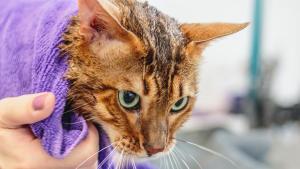
Cat Nutrition To Help Prevent Fleas
While proper nutrition is significant in maintaining a cat’s overall health, no specific diet or food can directly prevent or eliminate fleas. However, a healthy diet can support a cat’s immune system, contributing to their ability to fend off fleas and maintain skin health. Here are some nutritional aspects to consider for your cat:
- Provide your cat with a balanced, high-quality diet that meets their nutritional needs. Look for cat foods that contain quality protein sources, essential fatty acids, vitamins, and minerals to support overall health and strengthen the immune system.
- Omega-3 fatty acids, such as those found in fish oil or supplements, can promote healthy skin and a shiny coat. While they won’t directly prevent fleas, maintaining healthy skin can help make it less attractive to fleas.
- Ensure your cat has access to fresh, clean water at all times. Proper hydration supports overall health and helps maintain healthy skin and coat conditions. If your cat has dandruff, ask your vet: do fleas cause dandruff in cats?
- Establish a consistent feeding schedule for your cat. Regular meals and portion control can help maintain a healthy weight, which is important for overall well-being.
Remember, while nutrition is important, it is crucial to use veterinarian-approved flea control methods to prevent and treat flea infestations in cats effectively.
FAQ
Do Cat Fleas Live in Bedding, Clothes, Furniture?
Yes, cat fleas can live in bedding, clothes, and furniture. Fleas prefer to live on their host animal (such as cats) but can also infest the surrounding environment. Fleas and their eggs can be found in carpets, bedding, upholstery, and other areas where pets spend time.
Can I Use Cat Flea Treatment on My Dog?
No, using the appropriate flea treatment specifically designed for the species being treated is important. Cat flea treatments may contain ingredients or dosages that are unsafe for dogs. Consult with a veterinarian to choose the correct flea treatment for your dog.
How Long Does It Take for Flea Treatment to Work on Cats?
The time it takes for flea treatment to work on cats can vary depending on the product used. Some topical treatments can kill fleas within hours, while others may take a day or two. Oral medications can also have different timelines for effectiveness. It is best to follow the instructions provided with the specific flea treatment product for accurate information.
What Do Flea Eggs Look Like in Cat Fur and Ears?
Flea eggs are tiny, oval-shaped, and white or off-white. They are about 0.5mm in size and are often difficult to see with the naked eye. Flea eggs are usually found scattered throughout the cat’s fur and can also be found in the ears, especially if there is a heavy infestation.
What Can I Put in My Cat’s Food to Kill Fleas?
Certain natural ingredients may help repel fleas, but it is important to note that they may not be as effective as veterinary-approved flea treatments. Some examples include adding small amounts of apple cider vinegar or garlic to your cat’s food. However, it is recommended to consult with a veterinarian before adding anything to your cat’s diet to ensure it is safe and appropriate for your pet. Using veterinary-approved flea control products specifically designed for cats is typically the most effective and reliable method for treating and preventing flea infestations.
Olivia Bennet is a veterinarian who has worked in a veterinary clinic for many years. She specializes in the diagnosis, disease prevention, and treatment of not only cute kittens and puppies but also large farm animals. Olivia loves animals, cares about them, and wants to help you know more about your pets.

